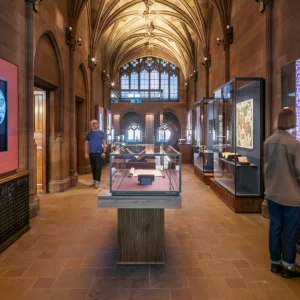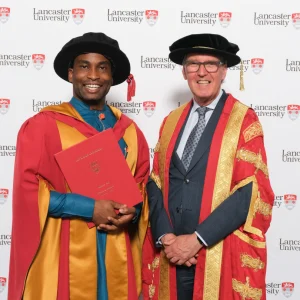Main image: Salvation Army chaplain Major Patricia Brown and architect Martin Sagar. Photo: Frederique Cifuentes
Most 75 year-olds have a story or two to tell, and Sheppard Robson, the architecture practice that turned 75 this year, is no different. to celebrate this milestone, Sheppard Robson is putting together 75 stories relating to its projects, from uncovering a burial site for victims if the Black Death to meeting Nelson Mandela when the practice worked on the design of the Nelson Mandela children’s Hospital in Parktown, Johannesburg.

In the mid 1980s the Royal Mint moved from London to Wales. When the site was cleared, a remarkable cache of Black Death artefacts was discovered. Working closely with Sheppard Robson, who were onsite building Royal Mint Court, archaeologists from the Museum of London exhumed the bodies of almost 2,000 plague victims (pictured above).
.jpg)
Photo: TimSoar
Presented as a series of interviews, each story reveals the background to some of the practice’s most memorable projects, using the sometimes unusual circumstances that occur around the process of architecture and construction.
.jpg)
Photo: TimSoar
The stories, which Sheppard Robson will be posting to its website in batches, also explain some of the design decisions involved in the practice’s projects, such as its design of the Salvation Army headquarters in London with Salvation Army chaplain Major
.jpg)
Photo: TimSoar
Patricia Brown and architect Martin Sagar both saying why they feel the project was a success.
Read the already posted stories here and keep up with new ones when they’re posted by following Sheppard Robson on Twitter @SheppardRobson





